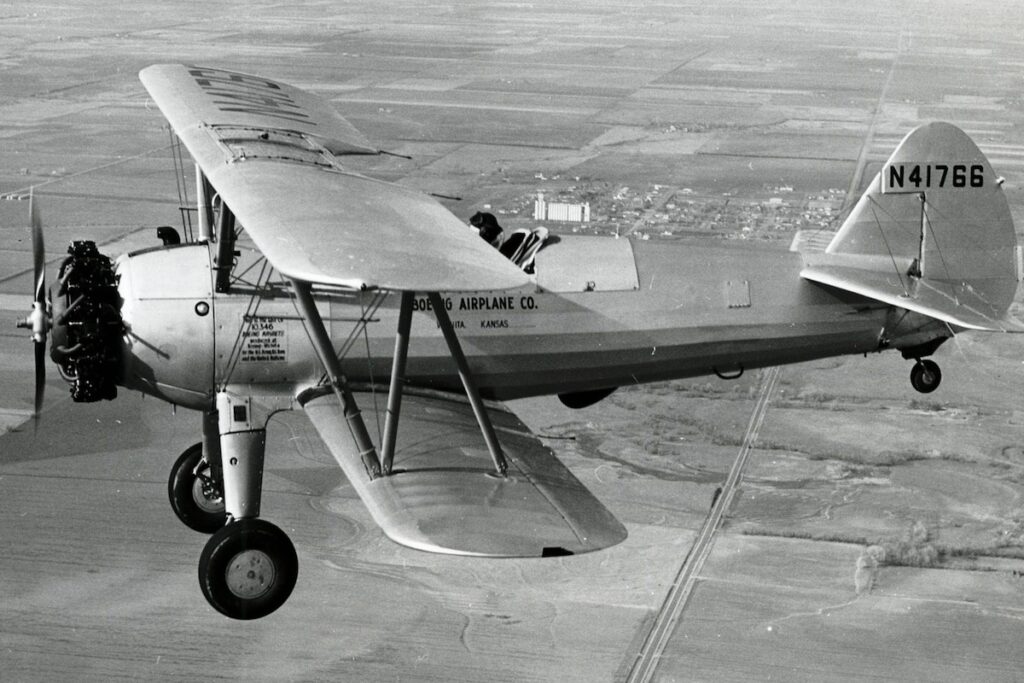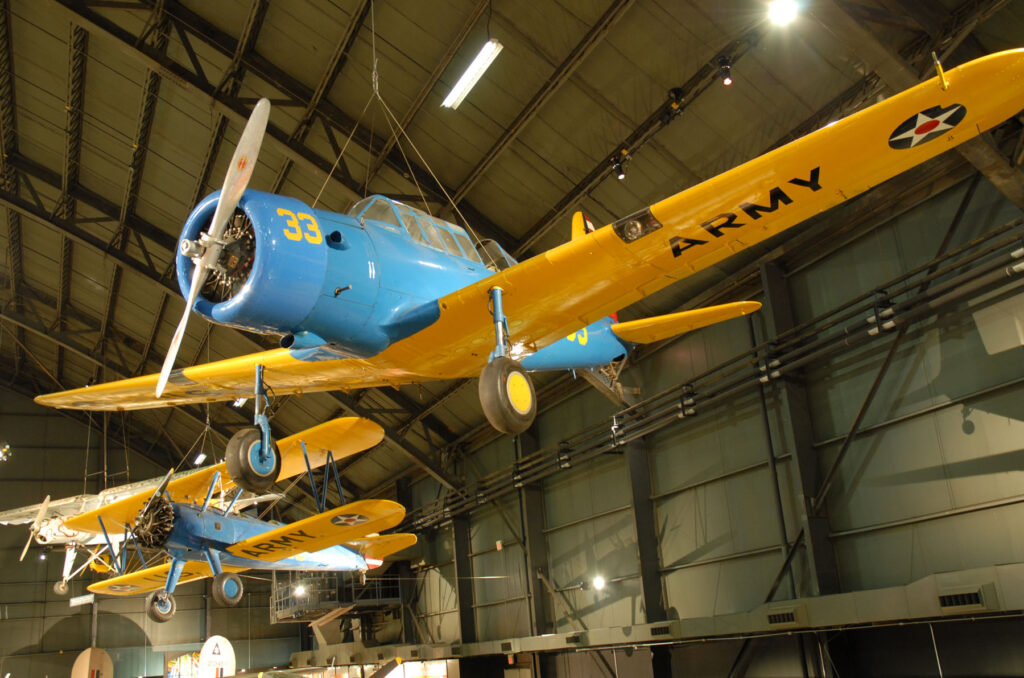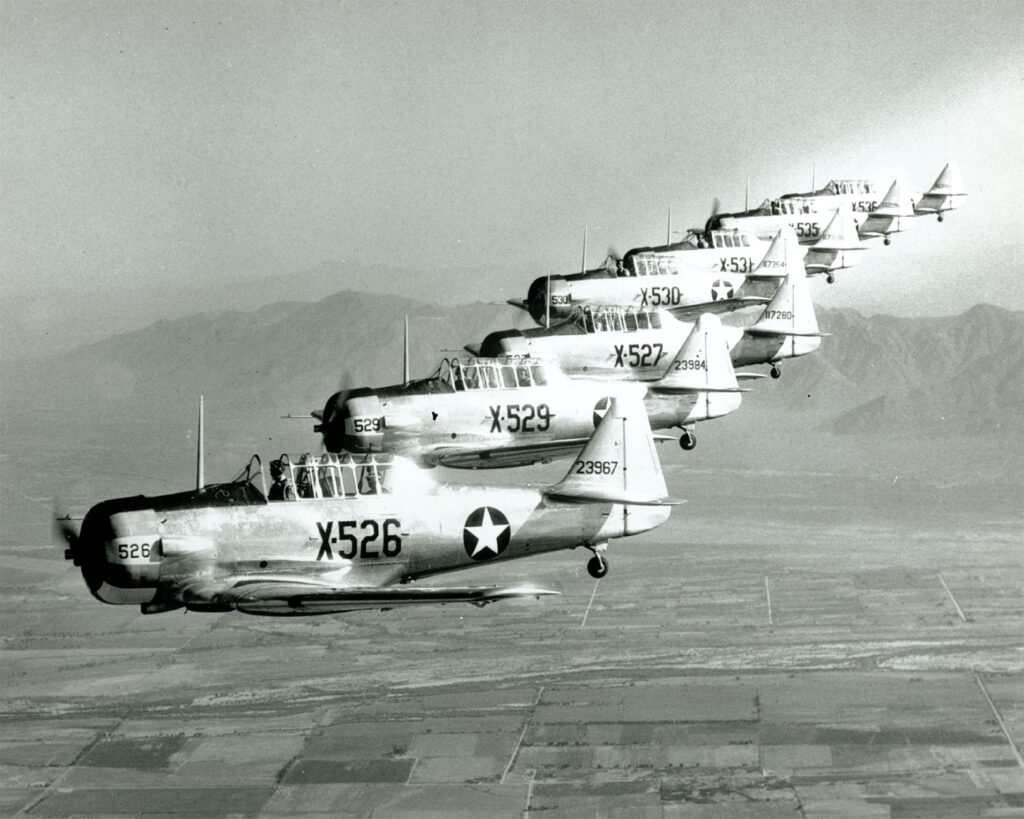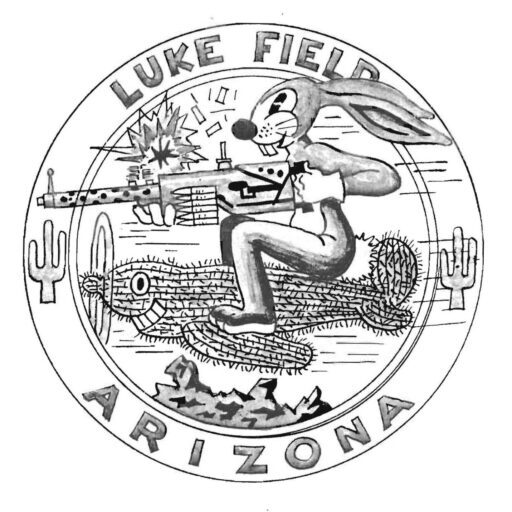To honor the men and women who flew and trained at Luke Field, Arizona, during World War II.
Path to Becoming a Pilot
Between the World Wars, pilots and aviators became super stars in the eyes of the American public. Pilots were setting, breaking, and rebreaking speed, distance, and endurance records. By the end of 1942, Luke Field graduates ranged in age from 18 to 28 with the majority being 20 to 22 years old. Thus, they were seven to nine years old when Charles Lindbergh became the first man to fly solo nonstop across the Atlantic in 1927. After that event, Charles Lindbergh became a household name. Becoming a pilot was many a young man’s dream. World War II gave hundreds of thousands of them a chance to follow their dream.
During World War II, flight training was made up of three almost equal ten-week parts. Early in the war, the demand for pilots reduced the timing to eight-weeks for each phase. Prior to flight training, an Aviation Cadet would go to one of three classification and preflight centers. At those centers, the men received their introduction into military life. That introduction included their initial G.I., or government issue, haircut and inoculations. They were also introduced to guard duty and Kitchen Patrol, universally referred to as K.P. During that time, they went through a series of physical and aptitude tests as well as a rigid medical exam. Based upon those results, the Army decided whether they would become pilots, navigators, or bombardiers.

First, cadets selected to be pilots went through primary flight training, taught at civilian contract schools with civilian instructors. That training consisted of 65 flying hours (later reduced to 60 hours) and 175 landings in light aircraft, like the Boeing-Stearman Primary Trainer (PT)-13 and PT-17 Kaydet biplanes. The pilots learned to take off, control the aircraft in flight, and land. They would solo during this phase. Next, came basic flight training.

Basic required more advanced flying skills to graduate. For one, it used a more advanced aircraft, the Vultee Basic Trainer (BT)-13 Valiant. Divided into two parts, basic flight training totaled 70-75 flight hours. The first part was transition where the student learned about his new aircraft. Next came the diversified phase, which required smooth control of the aircraft and precision flying. Here, the student learned about two-way radio communications and using a two-pitch propeller. They also learned how to fly acrobatics and accurate maneuvers. Training topics included formation flying, instrument flying, night flying, and cross-country flights. To help the students with those tasks, they started using the Link trainer. Near the end of the war, they replaced the BT‑13 Valiant with North American Advanced Trainer (AT)-6 Texan.

After graduating from basic, students went on to advanced flight training. The Army Air Force divided advanced training into two types of schools, single-engine and multi-engine. Most single-engine graduates tended to go to fighters and multi-engine graduates tended to go to bombers or transports. The multi-engine schools used the Curtiss-Wright AT-9 Jeep, Beechcraft AT-10 Wichita, and Cessna AT-17 Bobcat. The single-engine schools used the AT-6 Texan.
Luke Field was a single-engine advanced flight training schoolhouse. That said, many of Luke Field graduates went to multi-engine aircraft, especially early in the war. In their 70 flight hours of advanced flight training, students learned about combat maneuvers and aerial gunnery. They also improved on their skills in navigation, formation, and instrument flying. Upon completing advanced flying school, the cadet received his wings and commission. Graduation was not guaranteed, approximately 40 percent of the aviation cadets washed out or were killed during training.
After their commissioning, graduates went to transition training. Transition training took about two months and taught the graduates how to fly the aircraft they would most likely fly in combat. After transition training, graduates typically deployed overseas to or with their combat units. In 1942, Luke Field began to teach transition training courses in the P-40, first, to Chinese Air Force students and then to US students. In 1945, Luke Field began to provide transition training for the Lockheed P-38 Lightning, and later still, the North American P-51 Mustang.
